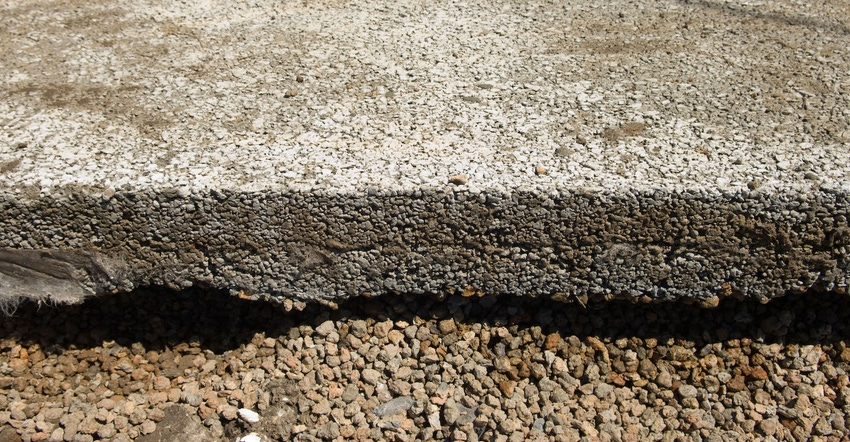Tips for Properly Designing and Maintaining Pervious Concrete
There’s no one-size-fits-all design for creating a low-maintenance pervious concrete project. Here’s what you need to know.

Maintenance-friendly designs are important to clients that want pervious concrete installations, but how much maintenance they’ll need is a variable that relies on site conditions.
David Liguori, president of Bay Area Pervious Concrete, discussed that and offered other insights about the material, which is designed to allow water to permeate the surface, and creating low-maintenance projects with pervious concrete.
Pervious concrete contains little or no fine aggregate (sand) and controlled amounts of water and cementitious materials. When used in pavement applications, the Federal Highway Administration says, pervious concrete can effectively capture and store stormwater runoff, allowing the runoff to seep into the ground and replenish groundwater supplies.
“When designed properly, pervious concrete pavements are fully self-contained, comprehensive, passive stormwater management systems,” Liguori said during a session at the ACI Concrete Convention in San Francisco in early April.
Liguori told ACI convention attendees that pervious concrete can last long periods of time with low maintenance but that maintenance needs greatly increase when it is used in hybrid pavement systems to collect water that runs off from asphalt roads.
“When you do that, you’re using your pavement as a filter,” he said. “Like any filter, the filter needs to be cleaned on a regular basis. Pervious concrete is no different.”
Pervious concrete must also be porous enough to function properly, according to Liguori, who said a good infiltration rate is critical.
“If your initial rate is 125 inches per hour it’s going to clog up pretty quickly,” he said. “You really need a good rate of 400 or 500 inches per hour.”
Measuring the infiltration rate with simple tests to see how quickly water permeates lets you know when maintenance is needed. But, Liguori said, “there’s no one particular maintenance routine that works for every pavement.”
Liguori said leaf blowers and vacuums can remove debris that penetrates below the pavement’s surface and clogs the porous spaces. He also said pressure washing can effectively remove debris that has penetrated deep below the surface.
If you install pervious concrete in areas with cold temperatures, Liguori said, the first winter after placement can be critical due to the material’s potential exposure to road treatments, which can clog the concrete. He recommended avoiding deicing chemicals and said you should vacuum coarse sand or calcium-treated sand once winter is over.
He also recommended following ASTM C-1701, which advises establishing baseline data on infiltration performance with immediate testing to ensure the slab is working as preferred.
Curb-to-curb pervious concrete is Liguori’s preferred road design. Clients “just blow it off once in a while and (it) still looks great, it still works great,” he said. Liguori also said a lot of maintenance needs can be avoided by having conversations with landscapers, who often cause issues.
“Landscapers are kind of the biggest problem we have,” he said. “They’re just used to throwing dirt on the pavement.”
Liguori said landscapers, who think they can just sweep off the dirt, need to be aware of the sensitivities of pervious concrete. He said throwing down some cheap plastic over pervious concrete during landscaping can prevent maintenance headaches down the road from excess dirt and debris.
About the Author(s)
You May Also Like




